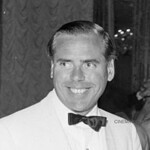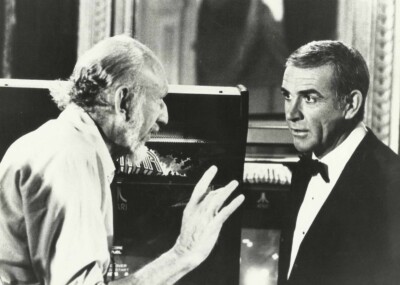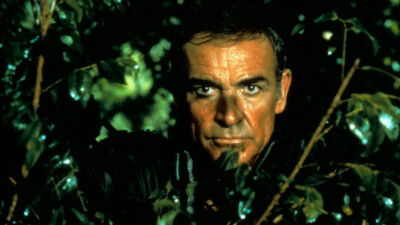 The year 2023 has been a year of Bond film anniversaries. This includes the unofficial rogue 007 movie Never Say Never Again (NSNA), which celebrates its 40th birthday. It was released in 1983, the same year that the official EON Bond movie Octopussy hit the big screen.
The year 2023 has been a year of Bond film anniversaries. This includes the unofficial rogue 007 movie Never Say Never Again (NSNA), which celebrates its 40th birthday. It was released in 1983, the same year that the official EON Bond movie Octopussy hit the big screen.
However, the producers behind both films were canny enough not to allow the two movies to go into direct competition. It was also a fascinating year for Bond fans, who were able to enjoy the latest entry in Roger Moore’s hugely popular 007 tenure, while having the opportunity – later that year – to see the first actor to play 007 back in his famous tuxedo for a seventh time.
The JBIFC takes the opportunity to look back briefly on Connery’s rogue James Bond movie, which was effectively a remake of Thunderball (1965), but with a very 1980s vibe.
007 and Counting…
001: Sean Connery’s 1983 James Bond comeback movie remains something of a curiosity to many general film enthusiasts, and tends to divide 007 fans, some loving it, others loathing it. The man behind the project, the late Irish producer Kevin McClory (1924-2006), also tends to divide Bond community opinion quite radically. He was outspoken, very ambitious and did not suffer fools gladly. There is some evidence that he was penning his memoirs towards the end of his life, but these were left unfinished, which was a pity.
002: Controversial, but much anticipated in its day, NSNA was a remake of EON’s 1965 official James Bond movie Thunderball (on which Kevin McClory had been co-producer, along with Albert R. Broccoli and Harry Saltzman). NSNA was based on limited rights that had originally been granted to McClory after a court case against Bond author Ian Fleming in the early 1960s.

In the early 1960s, sensing the impact of EON’s new star Sean Connery as Bond, McClory (pictured) had decided to join forces with the EON producers and exercise his new rights via a collaboration with them on Thunderball, retaining an option to exercise his rights once again in 10 years time, if he chose to do so.
By 1976, McClory had secretly persuaded Connery to return to a project for a film featuring his famous role, fin a writing capacity only. But McClory also worked on Connery to persuade the Scottish actor that he he could actually play 007 again. The more Connery mulled this over, the more the idea became attractive, both financially and creatively. This eventually led to NSNA.
003: According to Sir Sean in interviews he gave at the time, the title NSNA was inspired by his wife Micheline. She had reminded Connery that, after Diamonds Are Forever in 1971, he had sworn he would ‘never’ play Bond again! Sean could see the delicious irony of his wife’s comment, and the title went down well the critics.
004: There is a complex background history to the long saga of Connery’s comeback, which goes back to 1976. In that year, McClory surprised the movie world when he took out a (now infamous) advertisement in the trade journal Variety (on May 12, 1976), proclaiming that he was going to remake Thunderball as James Bond of the Secret Service, and that it was now in ‘pre-production’. The script had been developed by McClory, the spy author Len Deighton, and (to everyone’s surprise) none other than Sean Connery. The script was re-titled shortly afterwards (sometime in 1978-79) as Warhead.
005: This ambitious plan led to a lengthy legal battle between McClory and EON, which culminated in the Irish producer winning the right to exercise his original limited rights again and to remake Thunderball, but not in the epic ‘Star-Wars-Underwater’ sense which had been present in the original James Bond of the Secret Service/Warhead script, which EON’s lawyers felt had deviated considerably from the original Thunderball storyline. Indeed, the original script by McClory, Deighton and Connery had begun life as an outlandish fantasy epic, with SPECTRE having a lavish sea-base located under the Statue of Liberty in New York, and a devious plan to use robotic hammerhead sharks as weapons.
006: Instead of having the luxury of the epic Warhead script, the American director of NSNA, Irvin Kershner (1923-2010), had to stick very closely to a straightforward Thunderball adaptation.

Kershner said he thus felt he was ‘in a vice a lot of the time’, and there was constant legal pressure not to stray too far from the limited rights McClory had been granted. This led to considerable frustration at times. There were also questions about what tone to adopt – should it be a straighforward thriller, or have a more light-hearted approach? The final movie tried to combine the two, but seemed unsure of itself. Moreover, McClory, in order to get the movie finally made, had had to do a deal with Hollywood lawyer and producer Jack Schwartzman, who ran the production company Taliafilm. This meant that McClory lost creative control, and had to accept Schwartzman’s insistance that NSNA could only be a straight Thunderball remake, but adapted to the technology, computers and military hardware of the 1980s. Yet, in the context of the movie’s storyline, this worked well at the time: the use of Cruise missiles added some dramatic visual excitement, and many Bond fans rated the computer-game battle between Largo and Bond as genuinely tense (although it looks rather dated today!).
007: As well as the return of Sean Connery, which created substantial media interest around the globe, the casting for the film was thoughtful and strong, and Connery ensured that he had a big say in the choice of the various support actors in the movie, including Klaus Maria Brandauer (who played Largo), Max Von Sydow (who played Blofeld), and Barbara Carrera (who played Fatima Blush). These were excellent choices. Relative newcomer Kim Basinger, who played Domino, also proved to be a superb asset to the film.
Unfortunately, as Connery later made it plain in interviews, his return as 007 was not as enjoyable as he had hoped it would be – largely due to tensions with Jack Schwartzman. Connery felt that, in the end, he had to engage in a lot of behind-the-scenes organizational and logistical work that ought to have been carried out by Schwartzman. Nevertheless, although it did not generate as much cash as EON’s official 007 movie Octopussy, NSNA performed well at the box office, and gave Bond fans an intriguing glimpse of an ‘alternative’ take on Ian Fleming’s James Bond.
Did You Know?
Despite having to hand over creative control of his ‘rights’ to another producer to get NSNA made, Kevin McClory’s post-NSNA ambitions knew no bounds: he was convinced that he could make further 007 adventures, and had plans in place to make yet another unofficial 007 movie, dubbed Warhead 2000AD. At one stage, in the 1990s, he even persuaded SONY that his ‘rights’ could be used to create a rival Bond series to EON. Sadly, for McClory, much of this was a fantasy, exacerbated perhaps by his own declining health.

Sean Connery as 007 in the opening sequence for NSNA.
